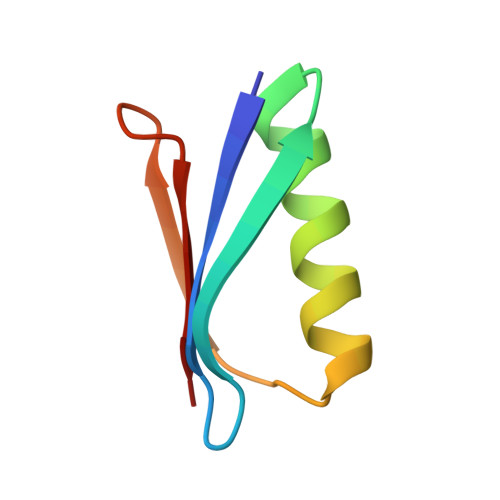Crystal Polymorphism of Protein GB1 Examined by Solid-State NMR Spectroscopy and X-ray Diffraction.
Frericks Schmidt, H.L., Sperling, L.J., Gao, Y.G., Wylie, B.J., Boettcher, J.M., Wilson, S.R., Rienstra, C.M.(2007) J Phys Chem B 111: 14362-14369
- PubMed: 18052145
- DOI: https://doi.org/10.1021/jp075531p
- Primary Citation of Related Structures:
2QMT - PubMed Abstract:
The study of micro- or nanocrystalline proteins by magic-angle spinning (MAS) solid-state NMR (SSNMR) gives atomic-resolution insight into structure in cases when single crystals cannot be obtained for diffraction studies. Subtle differences in the local chemical environment around the protein, including the characteristics of the cosolvent and the buffer, determine whether a protein will form single crystals. The impact of these small changes in formulation is also evident in the SSNMR spectra; however, the changes lead only to correspondingly subtle changes in the spectra. Here, we demonstrate that several formulations of GB1 microcrystals yield very high quality SSNMR spectra, although only a subset of conditions enable growth of single crystals. We have characterized these polymorphs by X-ray powder diffraction and assigned the SSNMR spectra. Assignments of the 13C and 15N SSNMR chemical shifts confirm that the backbone structure is conserved, indicative of a common protein fold, but side chain chemical shifts are changed on the surface of the protein, in a manner dependent upon crystal packing and electrostatic interactions with salt in the mother liquor. Our results demonstrate the ability of SSNMR to reveal minor structural differences among crystal polymorphs. This ability has potential practical utility for studying the formulation chemistry of industrial and therapeutic proteins, as well as for deriving fundamental insights into the phenomenon of single-crystal growth.
- Department of Chemistry, University of Illinois Urbana-Champaign, 600 South Mathews Avenue, Urbana, Illinois 61821, USA.
Organizational Affiliation:



















